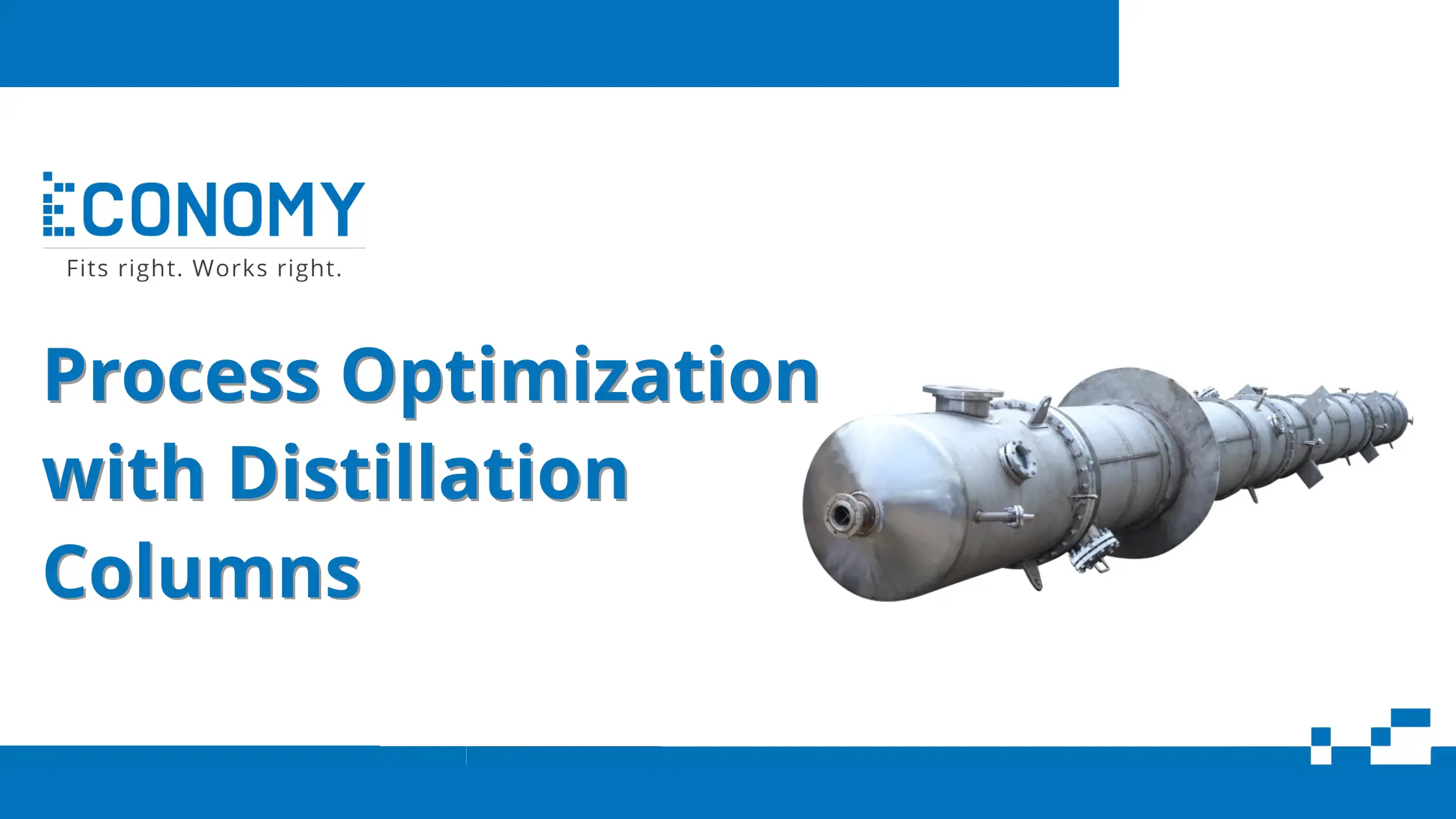1. Definition of Distillation Columns and Their Importance in Various Industries
Distillation columns are essential industrial devices used to separate mixtures into individual components based on differences in boiling points. The principle involves the vaporization of components and subsequent condensation, allowing for the purification or fractionation of mixtures. Distillation columns play a critical role in many industries, including petrochemical, chemical processing, oil refining, food and beverage, and pharmaceuticals. Their importance lies in enabling high-purity separation and ensuring efficient resource utilization, which enhances both product quality and process efficiency.
2. Types of Distillation Columns
There are various types of distillation columns, each designed to handle specific separation needs:
- Tray Columns: Use trays or plates where vapor and liquid phases contact each other. The vapor rises, while the liquid descends in a step-wise fashion, allowing for repeated vapor-liquid equilibrium stages.
- Bubble-cap columns
- Sieve tray columns
- Valve tray columns
- Packed Columns: Filled with packing material to provide surface area for vapor and liquid to interact. These are ideal for operations requiring lower pressure drops.
- Random packed columns
- Structured packed columns
- Batch Columns: Operate intermittently to handle small quantities or varied mixtures. Used when products change frequently.
- Continuous Columns: Operate nonstop for large-scale separation processes, common in refineries and large chemical plants.
- Azeotropic and Extractive Distillation Columns: Designed for separating azeotropic mixtures, where normal distillation is ineffective. In azeotropic distillation, a third component is added to break the azeotrope, while extractive distillation uses a solvent to enhance separation.
3. Optimization of Distillation Columns
Optimization of distillation columns focuses on improving their efficiency, throughput, and energy consumption. Key optimization strategies include:
- Feed Preheating: Preheating the feed reduces the reboiler duty, improving thermal efficiency.
- Pressure Optimization: Operating at optimal pressure levels can minimize energy use and enhance separation efficiency.
- Reflux Ratio Adjustment: Adjusting the reflux ratio influences the purity of the top and bottom products. High reflux can improve separation but increases energy consumption.
- Tray Efficiency: Improving tray design or using more efficient packing can enhance contact between vapor and liquid phases, resulting in better separation.
- Energy Integration: Using heat exchangers to recover waste heat from the distillation process can significantly reduce energy costs.
- Advanced Control Systems: Using process control systems, such as model predictive control (MPC), allows for real-time optimization, reducing deviations and improving consistency.
4. Distillation Column Components and Design
The design of a distillation column is crucial to its efficiency and includes several key components:
- Column Shell: The cylindrical outer casing that holds internal components.
- Trays or Packing: Provide surface area for vapor-liquid interaction. The type and arrangement of trays or packing affect the separation efficiency.
- Reboiler: Provides heat to the bottom of the column, generating vapor that rises through the column.
- Condenser: Cools the vapor at the top of the column to produce liquid, which is either collected or refluxed back into the column.
- Feed Inlet: The point at which the mixture to be separated is introduced. Proper feed location is critical for efficient operation.
- Distillate and Bottoms Product Draw: Collect the purified components after separation. Their positioning is important for product purity.
Distillation column design also includes determining the column height and diameter, tray spacing, number of theoretical stages, and the internal layout to balance separation efficiency and energy use.
5. Industries that Benefit from Distillation Columns
Distillation columns are vital in a wide range of industries:
- Petrochemical and Oil Refining: Used for separating crude oil into its components, such as gasoline, diesel, and other hydrocarbons.
- Chemical Industry: Critical for the purification of chemical products, solvents, and the recovery of valuable chemicals.
- Pharmaceutical Industry: Distillation is used to purify drug components and solvents, ensuring high purity for sensitive products.
- Food and Beverage: Distillation is employed in the production of beverages such as alcohol, and for the separation of flavors and fragrances.
- Environmental and Waste Management: Used in wastewater treatment and solvent recovery, reducing waste and improving sustainability.
By optimizing distillation processes, industries can significantly lower operational costs, reduce environmental impact, and ensure high-quality product output.
